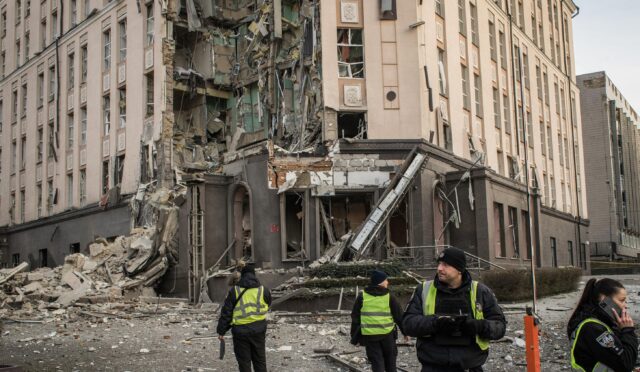Hamas Rejects New US-Backed Ceasefire Proposal
In a recent announcement, the White House revealed that Israel had “signed off” on a new ceasefire proposal for Gaza that was sent to Hamas. However, Hamas contends that the terms do not align with their expectations. This ongoing struggle, which has persisted for over 19 months, saw Israel recommencing military operations in Gaza following a previously established, albeit brief, truce.
The proposal was reportedly crafted with the involvement of President Donald Trump and US envoy Steve Witkoff, who worked closely with Israel before presenting it to Hamas. According to Press Secretary Karoline Leavitt, Israel’s approval of the proposal was secured prior to its transmission to Hamas, emphasizing that negotiations with the militants are still underway. Notably, Israel has not officially confirmed their agreement to this new plan.
Hamas Leadership’s Response
Despite earlier indications that Hamas had shown some willingness to accept a US-backed agreement, a leading member voiced strong reservations about the new plan. Bassem Naim, part of Hamas’ political bureau, stated that the proposal would perpetuate “killing and famine,” failing to address the primary demands of the Palestinian people, including a halt to hostilities.
Naim further highlighted that the group’s leadership is currently deliberating this proposal while bearing national responsibility. Sources close to Hamas characterized the new proposal as a regression from an earlier offer that included American guarantees for ongoing ceasefire negotiations.
Details of the Proposed Truce
The new ceasefire proposal suggests a temporary truce lasting 60 days, with a possibility of extending it to 70 days. Additionally, it outlines a plan for the release of ten living hostages and nine deceased individuals in exchange for Palestinian prisoners within the first week of the agreement.
This proposition, however, has yet to foster a sense of optimism among Hamas leaders, who remain skeptical about the efficacy of the truce in changing the dire realities on the ground.
Humanitarian Crisis in Gaza
Amid ongoing hostilities, the humanitarian situation in Gaza has reached alarming levels, with slow aid shipments trickling into the region following a prolonged Israeli blockade lasting over two months. Food security analysts have raised concerns that as many as one in five Gazans could face starvation in the days ahead.
Israel continues to assert that its military operations are focused on dismantling Hamas, following the group’s surprise attack on October 7, 2023. Recent reports indicate that airstrikes on Thursday resulted in numerous casualties, including 54 individuals killed, with significant loss of life occurring in strikes on residential areas.
The UN and GHF – Controversies Over Aid Distribution
The ongoing provision of aid has sparked criticism, particularly surrounding Israel’s approach to humanitarian assistance. The Gaza Humanitarian Foundation (GHF) is now managing aid distribution, a strategy that has been contested by the United Nations and the European Union, who have voiced concerns over its effectiveness.
Individuals in Gaza have expressed frustration over their struggles to procure necessary food items. One resident described a chaotic scene at a GHF center, recounting how desperate hunger drove people to take risks, only to face gunfire and grenades as they sought basic supplies.
International Outcry Over Israel’s Tactics
The dire humanitarian conditions have prompted international reactions. In a discussion with EU foreign policy chief Kaja Kallas, Jordan’s Foreign Minister Ayman Safadi condemned Israel’s alleged “systematic starvation tactics,” emphasizing that they breach ethical and legal norms.
As aid deliveries continue to be scrutinized, Israel’s UN ambassador has insisted that humanitarian trucks are indeed entering Gaza via the Kerem Shalom crossing, accusing the UN of attempting to hinder GHF efforts to provide assistance.
Escalating Tensions and Patient Evacuations
Gaza’s medical facilities are currently under immense strain, facing repeated attacks that hinder their operations. Al-Awda Hospital has reported instances of forced evacuations of patients and staff, raising serious concerns about the healthcare situation in the region.
The conflict, ignited by Hamas’s assault on Israel in October, has claimed thousands of lives, predominantly among civilians. As military operations escalate further, tragedies on both sides continue to unfold, with victims from both communities affected by the violence.
Impact of External Conflicts
The region is additionally facing threats from external conflicts, exemplified by a recent missile intercepted by Israel, which was reportedly launched from Yemen—a development linked to Iran-backed Houthi rebels.
As the situation remains volatile, the call for a comprehensive and lasting resolution becomes ever more pressing, while the human toll from the ongoing violence continues to rise.
Path Forward and Ongoing Negotiations
As negotiations proceed, the hope for a meaningful ceasefire remains fragile, with both sides entrenched in their positions. The international community watches closely, aware that any resolution must address the underlying issues that have fueled this protracted conflict.
With the stakes higher than ever, the need for diplomatic engagement and humanitarian support is urgent, as every day brings new challenges for the people of Gaza caught in the crossfire.







